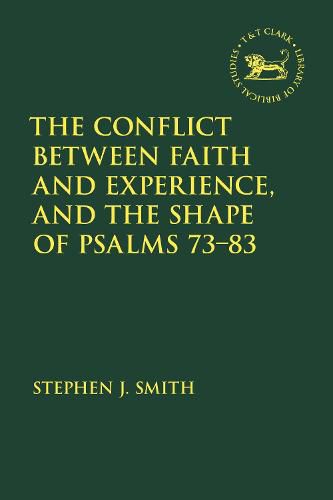Readings Newsletter
Become a Readings Member to make your shopping experience even easier.
Sign in or sign up for free!
You’re not far away from qualifying for FREE standard shipping within Australia
You’ve qualified for FREE standard shipping within Australia
The cart is loading…






Stephen J. Smith enters the lively field of editorial-criticism of the Hebrew Psalter or Psalterexegese with this detailed investigation into the final form of Psalms 73-83. In the book, he engages scholarly disagreements over this collection’s structure, the degree and nature of its literary unity, and the primary theological message(s) it communicates. Smith argues that the sequence of Psalms 73-82 - and possibly 83 - has a deliberate design that reflects a sustained focus on addressing, and resolving, a multidimensional collision between faith (i.e., core Israelite beliefs about God) and experience (i.e., the individual/community’s lived experience of God) that was precipitated by God’s prolonged absence in the Temple’s destruction (c. 586/587 BCE).
Parting ways with previous scholarship, Smith contends that a recursive organizing principle rooted in biblical parallelism structures the collection. Over the book’s nine chapters, he makes the case that the editor(s) grouped its psalms into two major blocks (74-78; 79-82) of two sub-groupings each (74-76, 77-78; 79/82, 80-81) in order to develop a single topic in multiple dimensions: the severe threat that God’s prolonged absence in the temple’s destruction posed to the ongoing viability of various core Israelite beliefs about God, most fundamentally God’s goodness. Smith makes the case that the collection is shaped to resolve this crisis by bolstering the reader’s confidence in, and commitment to, these beliefs in the face of their apparent failure.
$9.00 standard shipping within Australia
FREE standard shipping within Australia for orders over $100.00
Express & International shipping calculated at checkout
Stephen J. Smith enters the lively field of editorial-criticism of the Hebrew Psalter or Psalterexegese with this detailed investigation into the final form of Psalms 73-83. In the book, he engages scholarly disagreements over this collection’s structure, the degree and nature of its literary unity, and the primary theological message(s) it communicates. Smith argues that the sequence of Psalms 73-82 - and possibly 83 - has a deliberate design that reflects a sustained focus on addressing, and resolving, a multidimensional collision between faith (i.e., core Israelite beliefs about God) and experience (i.e., the individual/community’s lived experience of God) that was precipitated by God’s prolonged absence in the Temple’s destruction (c. 586/587 BCE).
Parting ways with previous scholarship, Smith contends that a recursive organizing principle rooted in biblical parallelism structures the collection. Over the book’s nine chapters, he makes the case that the editor(s) grouped its psalms into two major blocks (74-78; 79-82) of two sub-groupings each (74-76, 77-78; 79/82, 80-81) in order to develop a single topic in multiple dimensions: the severe threat that God’s prolonged absence in the temple’s destruction posed to the ongoing viability of various core Israelite beliefs about God, most fundamentally God’s goodness. Smith makes the case that the collection is shaped to resolve this crisis by bolstering the reader’s confidence in, and commitment to, these beliefs in the face of their apparent failure.